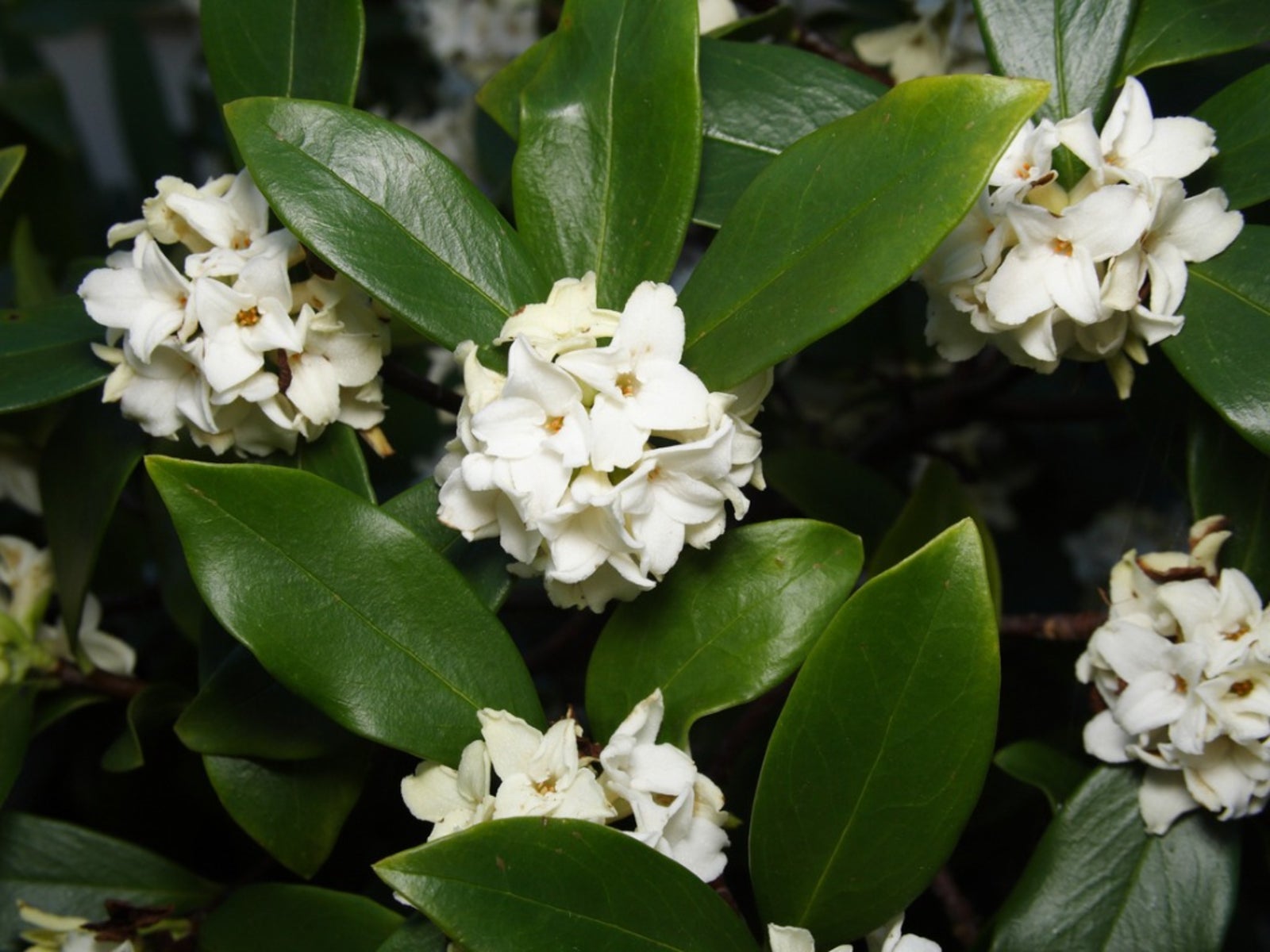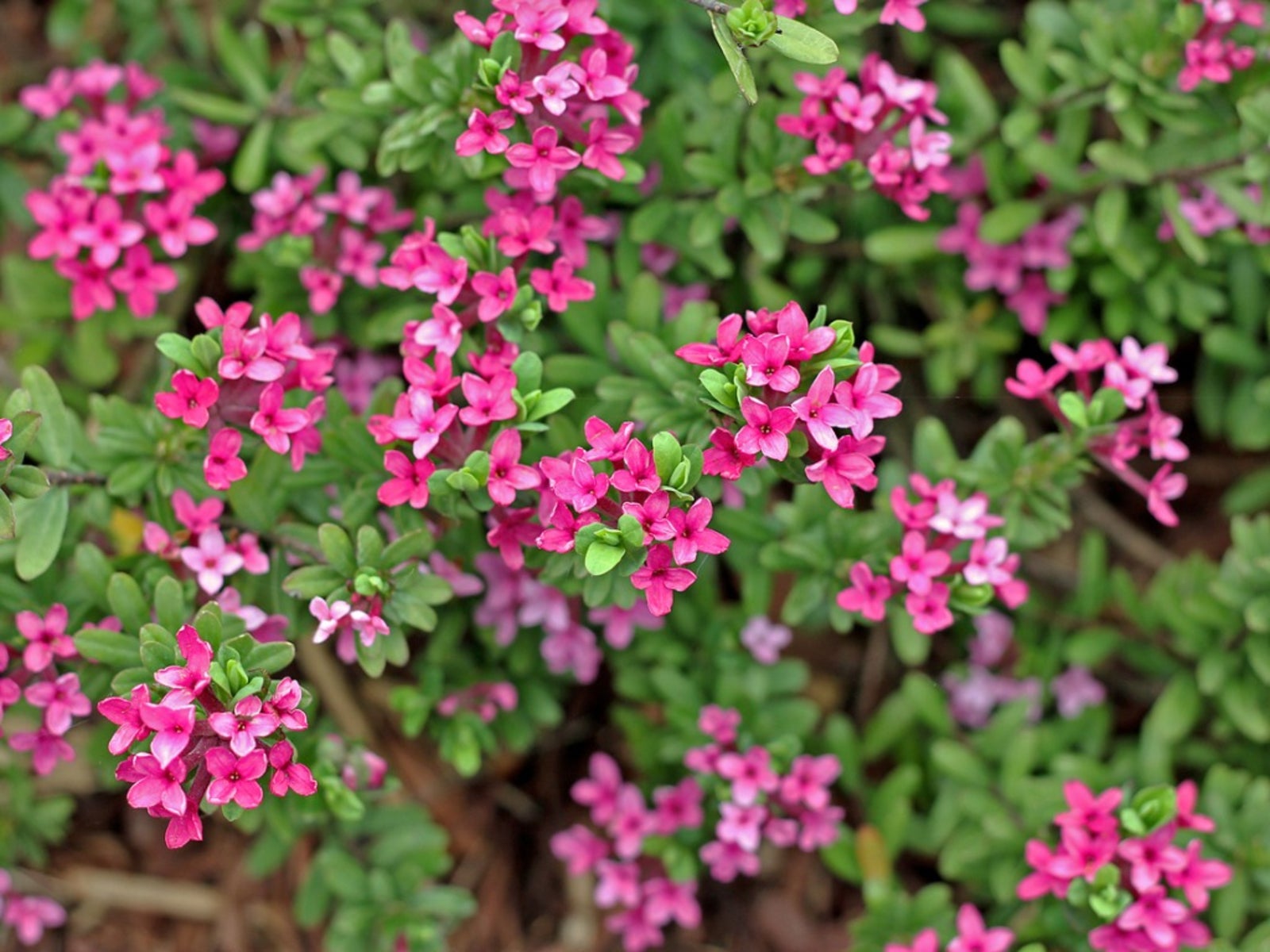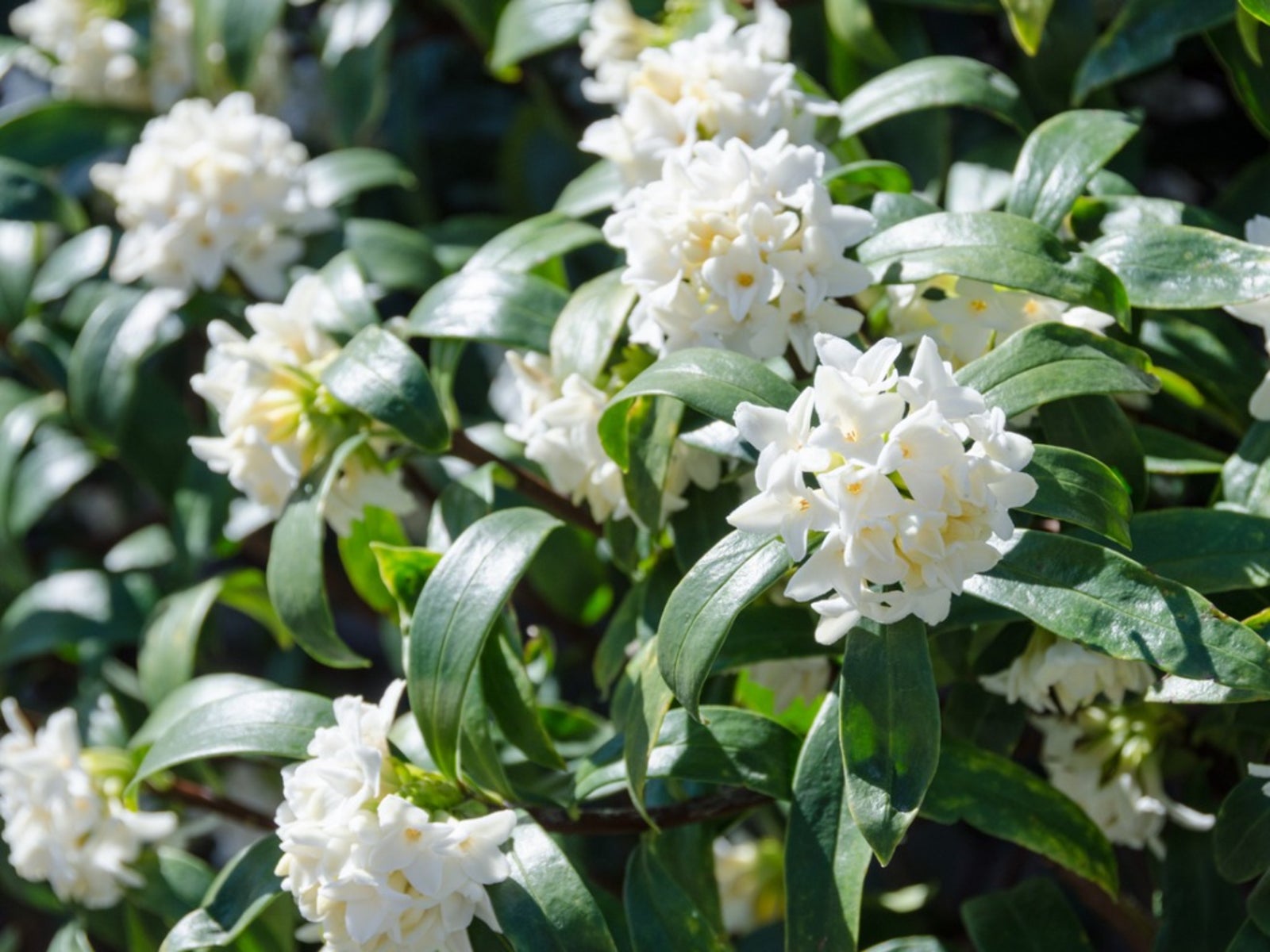Growing Winter Daphne Plants: Care For Winter Daphne


Daphne plants, also called winter daphne or fragrant daphne, are short-lived evergreen shrubs that grow in USDA hardiness zones 7 to 9. Gardeners often complain that growing winter daphne is difficult. Follow these suggestions for successful growth and blooms on your daphne bushes.
About Daphne Plants
Growing winter daphne sports fragrant blossoms in late winter for those gardeners who've learned how to get winter daphnes to bloom. The right care for winter daphne encourages the fragrant blooms, as does growing winter daphne in the right spot. Botanically called Daphne odora, pink buds emerge in February to March, becoming clusters of fragrant, tubular blooms. The shrub reaches no more than 4 feet (1 m.) in height and usually grows to just 3 feet (1 m.) high and the same in width. Lightly branched, the form of growing winter daphne is open and airy. Foliage is shiny green, simple, and attractive. The cultivar 'Marginata' has yellow bands around the glossy leaves.
Growing Winter Daphne
Daphne plant care involves growing daphne plants in well-draining soils. Root rots associated with soggy and poorly draining soil are often the end of daphne plants. In addition, plant daphne in slightly elevated soil beds amended with organic, humus-type materials such as coarse bark. Locate in an area that gets morning sun and afternoon shade or in an area of dappled shade. Getting this step in daphne plant care right is the first step in how to get winter daphnes to bloom. Deep cuts from pruning are another detriment to the healthy growth of daphne plants. Prune daphne lightly and only as needed. Care for winter daphne will include removing long branches at a node, without cutting into the main stem of the plant. Infrequent watering is a part of daphne plant care, especially during hot, dry summer days. Beware of overwatering. Finally, fertilize the daphne plant with a balanced fertilizer designed for shrubs when blooms are finished. Take special care of your fragrant daphne for winter blooms when the rest of the landscape is sleeping and for the enticing fragrance this plant provides.
Gardening tips, videos, info and more delivered right to your inbox!
Sign up for the Gardening Know How newsletter today and receive a free copy of our e-book "How to Grow Delicious Tomatoes".

Becca Badgett was a regular contributor to Gardening Know How for ten years. Co-author of the book How to Grow an EMERGENCY Garden, Becca specializes in succulent and cactus gardening.
-
 Looking For Plants To Give You The Soft And Fuzzies? Try These 5 Fuzzy Leaf Plant Options
Looking For Plants To Give You The Soft And Fuzzies? Try These 5 Fuzzy Leaf Plant OptionsLovers of texture, drama, silver foliage and tactile plants will adore these special sensory garden additions. These fuzzy leaf plant options will leave you all aglow
By Susan Albert
-
 Get Ready For A Summer Of Hummers! Grow These Full Sun Hummingbird Plants and Flowers
Get Ready For A Summer Of Hummers! Grow These Full Sun Hummingbird Plants and FlowersIf you’re lucky enough to enjoy a sunny backyard, make sure you are maxing out on your pollinator opportunities and grow these full sun hummingbird plants and flowers
By Tonya Barnett
-
 Daphne Plant Types: Growing Daphne Plants In The Garden
Daphne Plant Types: Growing Daphne Plants In The GardenYou can find daphne plant types to suit most any need, from shrub borders and foundation plantings to stand-alone specimens. Find out about the different daphne plant types and how to care for them in this article.
By Jackie Carroll
-
 No Flowers On Daphne Plants – Reasons For Daphne Not Blooming
No Flowers On Daphne Plants – Reasons For Daphne Not BloomingDaphne plants are not always easy to grow, and even those with vigorous foliage don't necessarily flower. If you find your Daphne not blooming, you'll want to read some tips on how to get blooms on Daphne plants. Click here to learn more.
By Teo Spengler
-
 Pruning Winter Daphne: How And When To Cut Back Daphne
Pruning Winter Daphne: How And When To Cut Back DaphneDaphne shrubs generally do not need to be pruned unless they are growing into another plant. If this does become necessary, it is important to know how to prune daphne. This article will help with that.
By Bonnie L. Grant